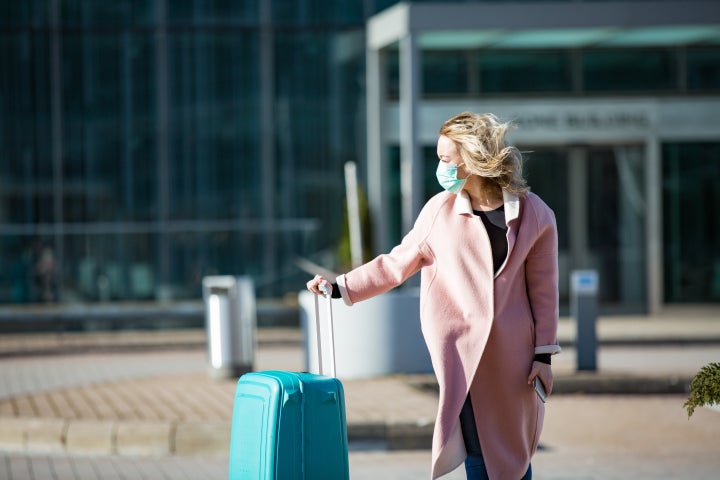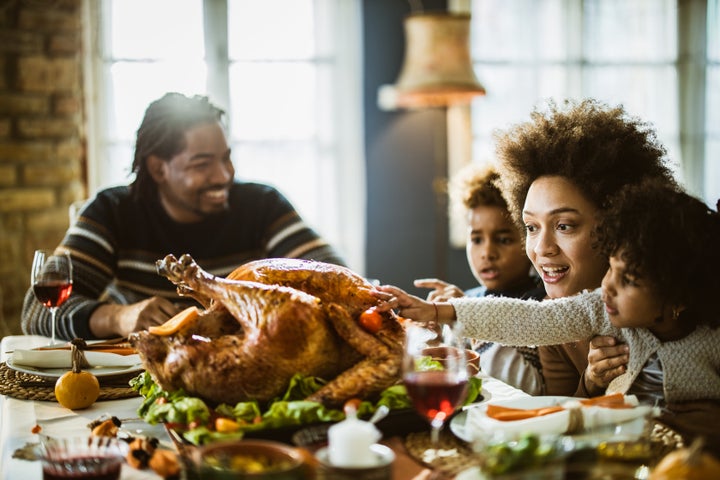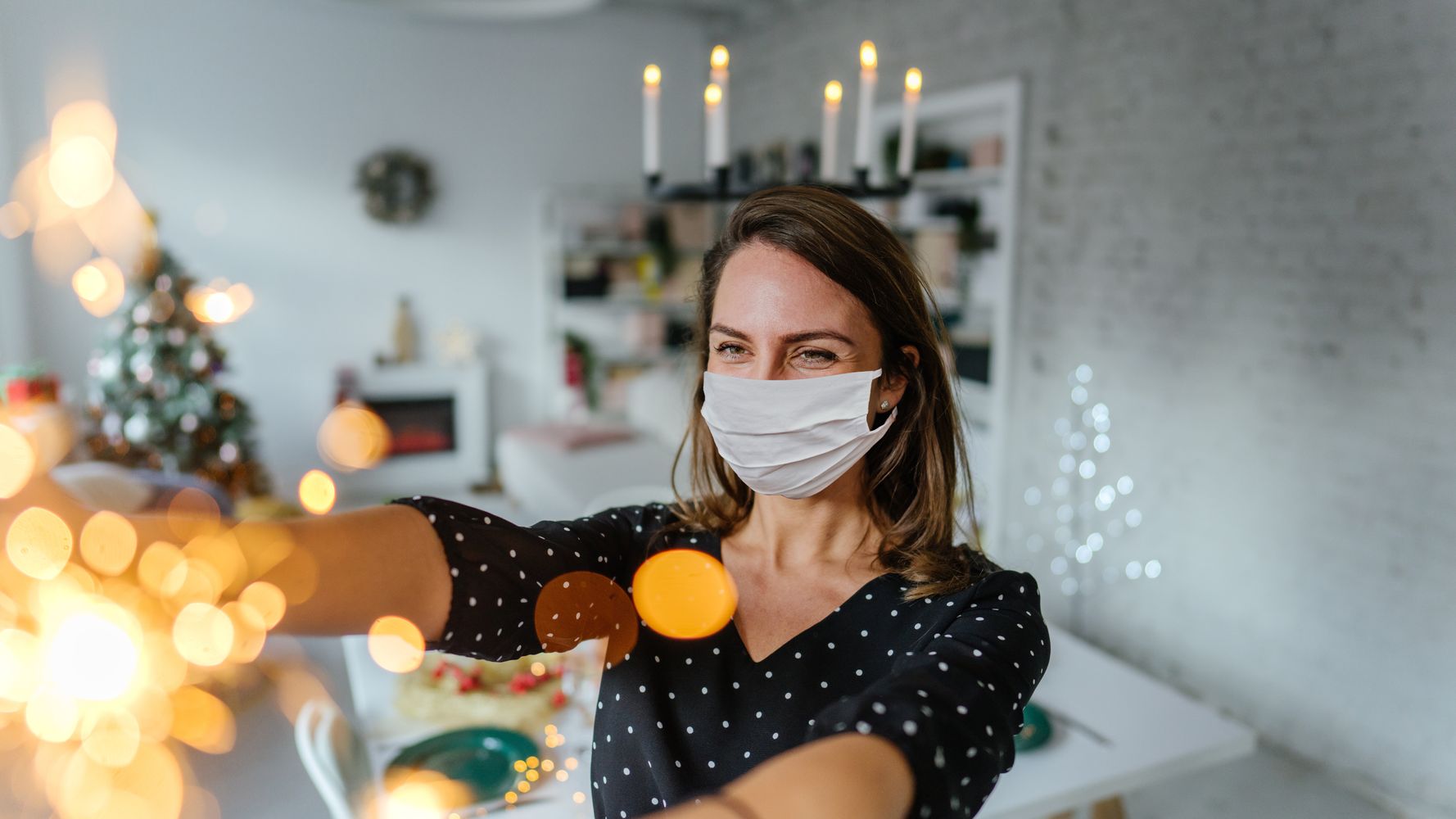[ad_1]
The COVID-19 pandemic is now at its worst point in the U.S., with daily new coronavirus cases exceeding 150,000, a figure that’s double the — already very high — number of daily cases over the summer.
Because the events associated with major holidays are stacked at the end of the year, there is a high chance that the pandemic will get worse before it gets better, especially if we don’t follow mitigation measures during the festive season.
Cameron Wolfe, an infectious disease physician at Duke University School of Medicine, said the holidays will increase the spread of COVID-19. After the months of sacrifices millions of Americans have made, Wolfe stressed that preparing to safely celebrate the holidays is crucial for the future.
Part of that includes understanding the most likely ways the virus can spread. Below are common scenarios that hold a greater risk of transmission, along with some advice for having a safe holiday season:
Gatherings where people of all ages come into contact are more likely to be places where COVID-19 can spread.
This shouldn’t come as a surprise, but it deserves the top mention. In most of the country, holiday festivities take place inside someone’s home around a food-filled table with lots of family and friends. However, that exact situation is also a major way you can catch and/or spread the coronavirus this holiday season.
“I think, unfortunately, the most likely way people are going to get COVID during all of these holidays is by having indoor gatherings,” said Marybeth Sexton, assistant professor of infectious diseases at Emory University School of Medicine.
Holidays are basically the perfect setup for infection: People travel from different areas; college students return from communal living set-ups; and people who are older, or who have medical conditions, mingle with those who are at lower risk of suffering from the coronavirus and may not be as stringent about following mitigation measures.
“The holidays are going to be a time when we’re going to mix people in one setting, potentially spread COVID, and then people may go back home and further spread it in their local communities.”
– Marybeth Sexton, Emory University School of Medicine
“We know that parties, gatherings, weddings, even funerals have been sources of many outbreaks of COVID that have then gone on to spawn additional cases in local communities when people have returned to them,” Sexton said. “The holidays are going to be a time when we’re going to mix people in one setting, potentially spread COVID, and then people may go back home and further spread it in their local communities.”
Indoor restaurants, bars and religious services are also potential superspreader situations.
Sexton is also concerned about the virus spreading in other holiday-adjacent scenarios. Going to restaurants with family, nights out drinking with loved ones (Thanksgiving Eve, for example, can be a busy night at local bars) and religious services can all be prime places for transmission. Not only are you mingling with people outside of your household, but specific conditions make them especially risky. Religious services, for example, often include singing, which increases the number of respiratory droplets and aerosols in the air that could contain the virus.
“You are going to get a lot of people together from different exposure risks and backgrounds in indoor spaces that may not be that well ventilated,” Sexton said. “Particularly around the holidays, it’s very unlikely that people are going to be masked because they are going to be eating and drinking as part of some of these celebrations.”
Takeout, delivery and virtual religious services should be prioritized over in-person dining and in-person attendance to help curb the spread. It’s not easy to adjust beloved holiday traditions, but it’s worth it as this pandemic continues to throw unexpected challenges our way almost daily.

Traveling for the holidays during the pandemic can also be risky.
“What is an airport if not, intentionally, a blend of people from all parts of the country?” Wolfe said.
As the entire country travels to family and friends on public transit, trains and airplanes, there will be strangers — potentially some from coronavirus hot spots — sitting next to each other for long periods of time.
And while there are mandatory face mask requirements on most airlines and in most public transit settings, social distancing is not always an option and masks do come off when people eat or take a sip of water. Plus, reality tells us that not everyone actually follows guidelines, unfortunately.
There’s also no way to tell if people are sick, due to asymptomatic cases, Wolfe said. Often a person won’t even know they’re infected because of this. That’s why experts stress limiting travel right now.
Coronavirus will spread through asymptomatic people who attend holiday functions.
Wolfe said that asymptomatic carriers will likely be a significant problem during holiday gatherings.
“I can be blissfully unaware that I’m sick and yet liberally transmitting the virus to people,” Wolfe said, adding that people are generally only careful around others who are displaying symptoms. This could result in people thinking they’re “safe,” so they are less strict with measures like masks and physical distancing.
And, on top of that, those with symptoms often don’t attend gatherings. Many people with asymptomatic cases of the virus will likely go to functions because they believe they’re healthy. That’s why the best solution is to not have large, in-person gatherings at all.
People will assume that the safety measures they are taking in the moment will eliminate all risk.
Between masking, physical distancing, hand washing, monitoring symptoms and testing, we have a number of defenses against contracting and spreading COVID-19. But, it’s crucial to remember that these mitigation techniques ― while they help immensely ― are not fail-safe and are dependent on the behaviors of those in your household or bubble, too.
It’s wrong to “assume that just a little bit of mitigation can make all the difference,” Wolfe said.
“The mistake that some people make is they go and get a test and they say ‘aha, my test is negative — that’s great, I didn’t get exposed,’ and that is not accurate.”
– Cameron Wolfe, Duke University School of Medicine
He added that a lot of people, for example, look at the 6-feet social distancing rule as a set-in-stone guideline that always protects you from spreading and catching COVID-19. In reality, 6 feet is an estimate and varies in efficacy depending on the amount of time you spend in the same space as someone. That is, you won’t be safe from contracting the coronavirus by just staying more than 6 feet away, if you spend hours with an infected person. It absolutely helps, but there is still risk.
Wolfe said he is also witnessing more and more people using a negative COVID-19 test result as a green light to engage in risky activities.
“The mistake that some people make is they go and get a test and they say ‘aha, my test is negative — that’s great, I didn’t get exposed,’ and that is not accurate,” Wolfe said. “What that test does is it tells you that you’re negative on that day at that time.”
Someone who tests negative for the virus could still be incubating their way into an infection that won’t appear for a few days, potentially not until they’re visiting family or friends for a holiday.

Holiday guests will follow the lead of those around them, whether that’s good or bad.
Baruch Fischhoff, a professor at Carnegie Mellon’s Institute for Politics and Strategy and Department of Engineering and Public Policy, noted that people may be lax on their health and safety measures if others are, too.
“We tend to do what other people are doing both because we want to be like other people and because we think, ‘Maybe they know something, so I’ll go along with it,’” Fischhoff said.
“We tend to do what other people are doing both because we want to be like other people and because we think, ‘Maybe they know something, so I’ll go along with it.’”
– Baruch Fischoff, Carnegie Mellon University
It all comes down to sociology: There’s a wanting to be liked and a fear of sticking out. So when it comes to the holidays, guests at family dinners and religious services will likely read the room and do what those around them are doing when it comes to mitigation measures — which means that if you walk into your aunt’s living room and everyone is mask-less, you’ll likely take off your mask, too.
Bottom line: Everyone needs to be more cautious than they think.
Sexton stressed that there is no completely safe way to celebrate the holidays if you’re doing so with people from outside of your household. The best way to celebrate this year, unfortunately, is at home.
If for some reason it’s unavoidable, Sexton underscored the importance of risk reduction. She said that those from different households can quarantine individually for two weeks prior to an event and get tested at the end of quarantine.
“That is not completely without risk but that is a fairly low-risk way of doing it,” she said, noting that this type of situation can only work if you truly trust everyone in the bubble to properly quarantine. And even still, the number of people at the in-person gathering should remain low.
Sexton added that if people can’t quarantine and get tested, holiday celebrations should happen outdoors while adhering to mask, hand-washing and distancing rules (and this is a good idea even if you quarantine and get tested).
But, again, the best option is celebrating with those outside of your household virtually and keeping the in-person events open to only those who live under your roof. That’s the only way to eliminate risk.
[ad_2]
Source


